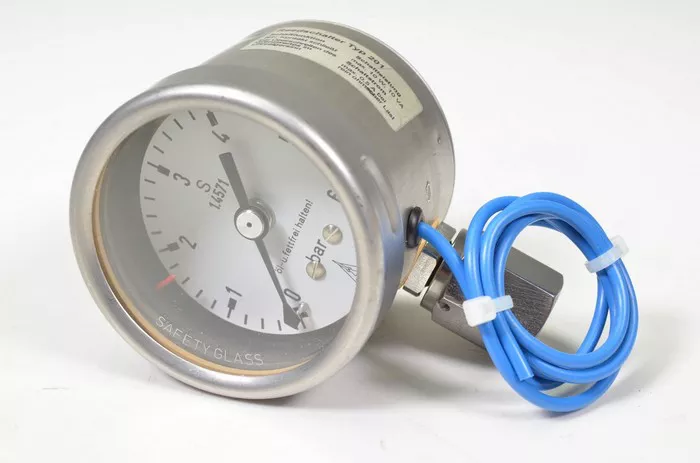Mercury blood pressure gauges, once the gold standard in measuring arterial pressure, have gradually fallen out of favor in both clinical and industrial settings. For decades, these instruments provided accurate, reliable readings critical to diagnosing hypertension and other cardiovascular conditions. However, a combination of environmental concerns, safety risks, and technological advancements has precipitated their decline. This article explores eight fundamental reasons why mercury blood pressure gauges are now rarely used, offering insight into how the field of Instrumentation has evolved.
1. Environmental and Health Hazards of Mercury
Mercury is a heavy metal with well-documented toxicological effects. Exposure to mercury vapor or liquid can cause severe neurological, respiratory, and renal damage. The environmental impact is equally concerning; mercury persists in ecosystems, bioaccumulates, and contaminates water sources, posing a global ecological threat. Due to these hazards, many countries have enacted stringent regulations restricting mercury use in medical devices, making mercury blood pressure gauges increasingly obsolete.
2. Safety Concerns in Clinical Settings
The fragile glass columns of mercury sphygmomanometers are prone to breakage, creating the risk of mercury spills. Such incidents require immediate, specialized clean-up procedures to prevent toxic exposure. Additionally, healthcare professionals face liability issues related to mercury mishandling. The potential harm to both patients and staff has motivated hospitals and clinics to transition toward safer alternatives, such as digital pressure gauges and aneroid sphygmomanometers.
3. Technological Advancements and Improved Alternatives
Modern pressure measuring devices have seen remarkable technological progress. Digital and aneroid gauges offer comparable accuracy without the risks associated with mercury. Devices featuring electronic sensors provide real-time readings, automated data logging, and enhanced ease of use. This evolution has made mercury gauges increasingly outdated and less practical for fast-paced medical environments.
4. Regulatory Restrictions and Bans
International treaties such as the Minamata Convention on Mercury have accelerated the phase-out of mercury-based devices worldwide. Many healthcare systems have adopted policies that ban or discourage the use of mercury sphygmomanometers altogether. Compliance with these regulations not only protects health but also aligns institutions with global sustainability initiatives.
5. Calibration and Maintenance Challenges
Mercury blood pressure gauges require regular calibration to maintain accuracy. The delicate nature of the mercury column means that improper handling can introduce measurement errors. Calibration also necessitates specialized knowledge and equipment. In contrast, modern devices often feature self-calibration or require less frequent maintenance, reducing operational overhead.
6. Bulkiness and Portability Limitations
Mercury sphygmomanometers tend to be bulky and fragile, limiting their portability. This restricts their use primarily to stationary clinical environments. In contrast, digital and aneroid alternatives are compact, lightweight, and more suited for home monitoring, ambulances, and fieldwork, where mobility is crucial.
7. Reading Interpretation Complexity
Accurately reading the mercury column requires user skill and careful observation. Parallax errors can lead to incorrect interpretations, especially in low-light or hurried conditions. Digital devices offer clear digital readouts, minimizing human error and enhancing diagnostic reliability.
8. Cost and Availability of Mercury
The global decline in mercury mining and refining has made mercury more expensive and less accessible. This increase in cost discourages manufacturers from producing mercury gauges. Additionally, disposal and handling costs further inflate the total expense of ownership, making alternatives more economically viable.
Conclusion
While mercury blood pressure gauges provided decades of dependable service, their use has become increasingly impractical and unsafe. Environmental and health concerns, regulatory pressures, and technological innovation have collectively pushed the industry towards safer, more convenient alternatives. The shift aligns with broader trends in pressure gauge technology, emphasizing accuracy, safety, and environmental stewardship. As healthcare and industrial instrumentation continue to advance, mercury sphygmomanometers will remain a relic of the past, replaced by devices better suited to modern demands.
FAQs
Q1: Are mercury blood pressure gauges more accurate than digital gauges?
Historically, mercury gauges were considered the gold standard due to their direct physical measurement principle. However, modern digital gauges have improved significantly and can provide equally accurate readings when properly calibrated.
Q2: Can mercury blood pressure gauges be safely used today?
While possible with strict precautions, their use is discouraged due to the health risks associated with mercury exposure and the availability of safer alternatives.
Q3: What are the best alternatives to mercury blood pressure gauges?
Aneroid sphygmomanometers and digital pressure gauges are the most common replacements. Digital models often include additional features such as data storage and automated measurement.
Q4: How do regulatory agencies handle mercury blood pressure gauges?
Many agencies have implemented bans or strict controls on mercury devices, encouraging the transition to mercury-free instruments to protect public health and the environment.
Q5: What should be done if a mercury gauge breaks?
Mercury spills require immediate containment and professional hazardous material cleanup due to toxicity and environmental hazards. Users should avoid direct contact and ventilate the area.

